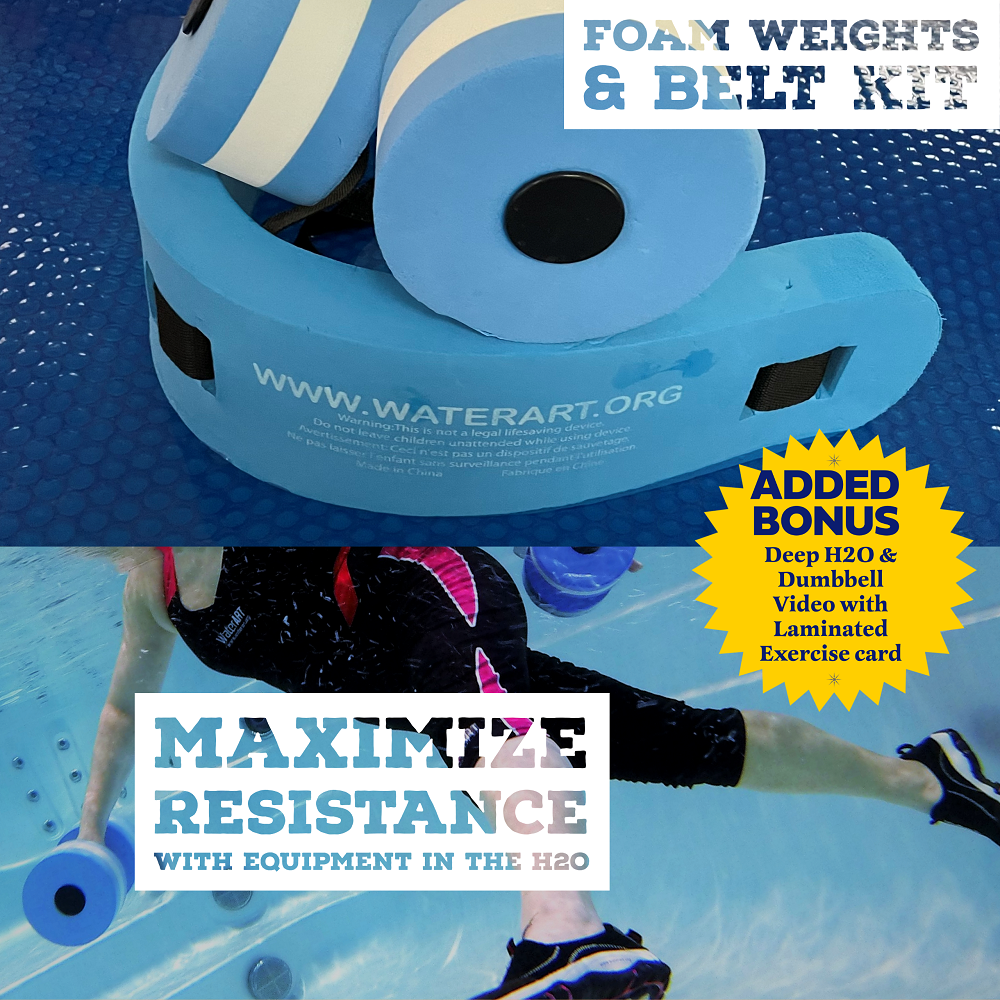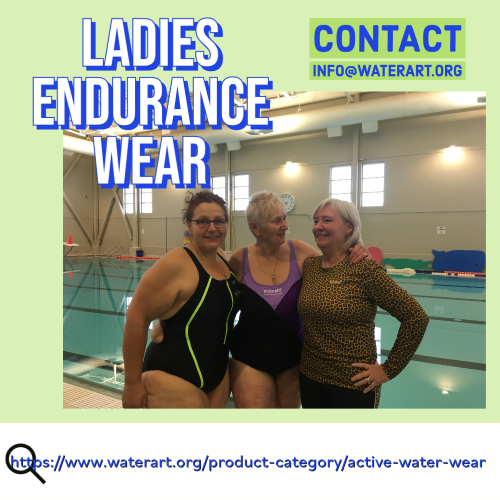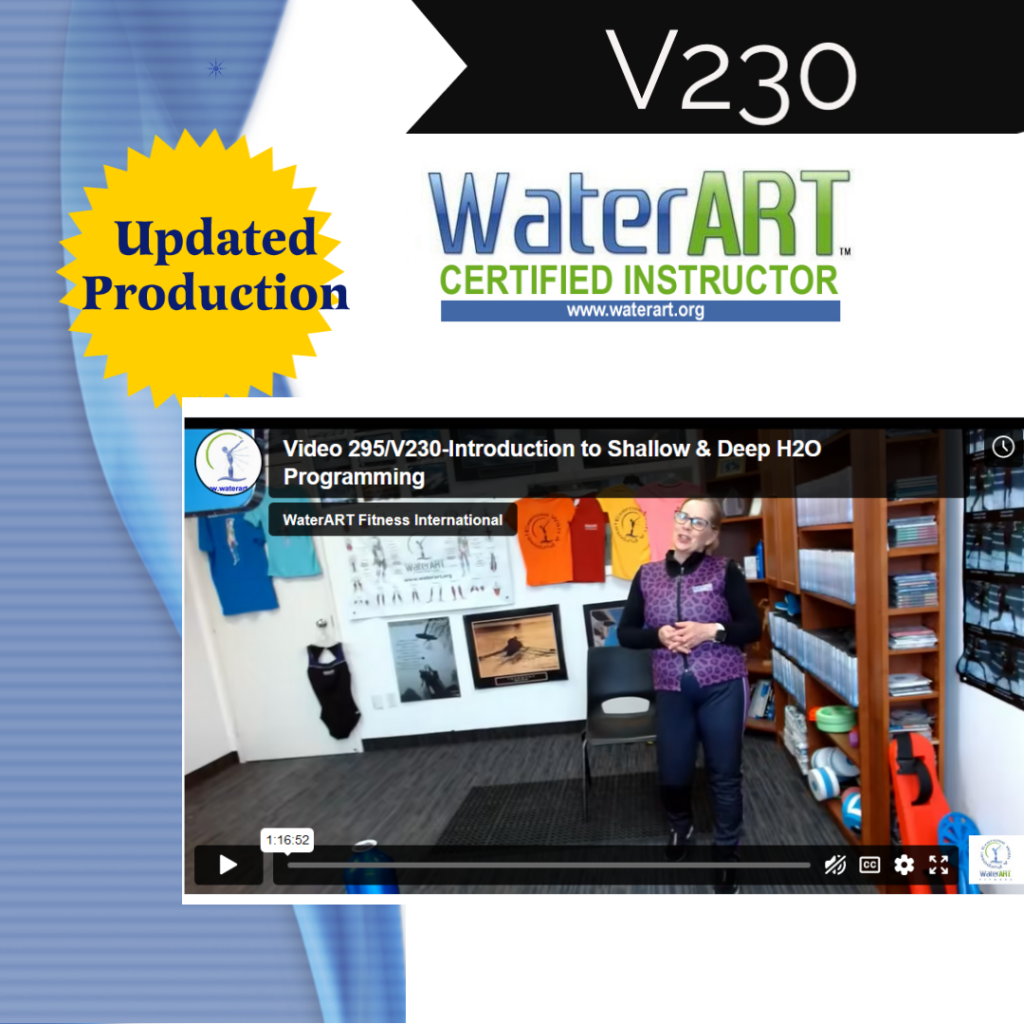March 1 2023- We updated this video to V230/V295 since we no longer must adhere to covid safety guidelines. Although, the last three years made us take note of specialized the exercise for respiratory conditions. The new video (V230/V295) is focused on lesson planning and the ways of teaching shallow & deep programs. We do hope you will review this since each instructor must be able to write and teach a safe, effective and enjoyable program.
In any given class – the instructor will find a group of individuals -a healthy person, an athlete, an older adult, a pregnant woman, a beginning exerciser. If you are teaching a class of mixed ages and fitness levels it is possible to have a combination of all the above. You want to provide a good workout for everyone –and one size does not fit all. When planning a class you have to plan moves that can be adjusted to suit each individual. It is important that each person receives a good workout and can’t wait to come back for more!
Depending upon the pool, you can choose between shallow, transitional or deep-water depths. Although it is preferable to keep everyone in the same class in the same depth of water this is not always possible, therefore you must be aware of the similarities and differences found at each depth and train your clients accordingly. It is possible to teach the same biomechanical moves to all clients but they must be trained to use the water safely, maintain good body alignment and perform each movement correctly. Teach the moves suitable for the class advertised, and demonstrate the different levels of intensity and/or modifications that can be used for each water depth. Always allow your participants to choose their own level and to “work-out at their own pace”.
DIFFERENCES IN WATER DEPTH
Shallow water training is defined as: water depth is waist to chest, feet on the bottom, base of balance is at the feet. This is the depth that is best for non swimmers and those who want to perform more intensity with cardiovascular training (although all depths may target CV). Most new patrons would be well served to start in shallow water depth and work on skills then move to other depths.
Transitional water training is defined as: water depth is chest to neck, feet on the bottom, the center of balance is at the chest because the lungs act like life preservers. This makes balance more of a challenge. Working transitionally can be done 2 ways: For most athletic people -use more upward movement – i.e. rebounding moves using the pool floor or, for others, by using a belt and treating the depth as a deep water program. This is an awkward depth and using this dept as deep water (with noodle or belt may be the easiest to teach. Remember this depth depends on a person’s physical height.
Deep water training is defined as :water depth is between neck and shoulders, with feet off the bottom of the pool at all times. The center of balance is at the chest because the lungs act like life preservers. In water, the centre of buoyancy is the lungs whereas on land it is must be balanced with the centre of gravity (pelvic area for women or the chest area for men). Buoyancy will make you float upwards so care must be taken to adapt to this change. This is a challenging depth to teach since there are floaters and sinkers and people who have muscles (they can travel and move) versus those without a lot of co-ordination or strength may simply hang out. Be a sure to utilize a buoyancy belt that is not too floaty or keeps your head above the water. Advanced students may simply utilize a noodle (good closed cell noodle) that is excellent for both keeping head above the water and challenging the muscles when utilized as strength.





